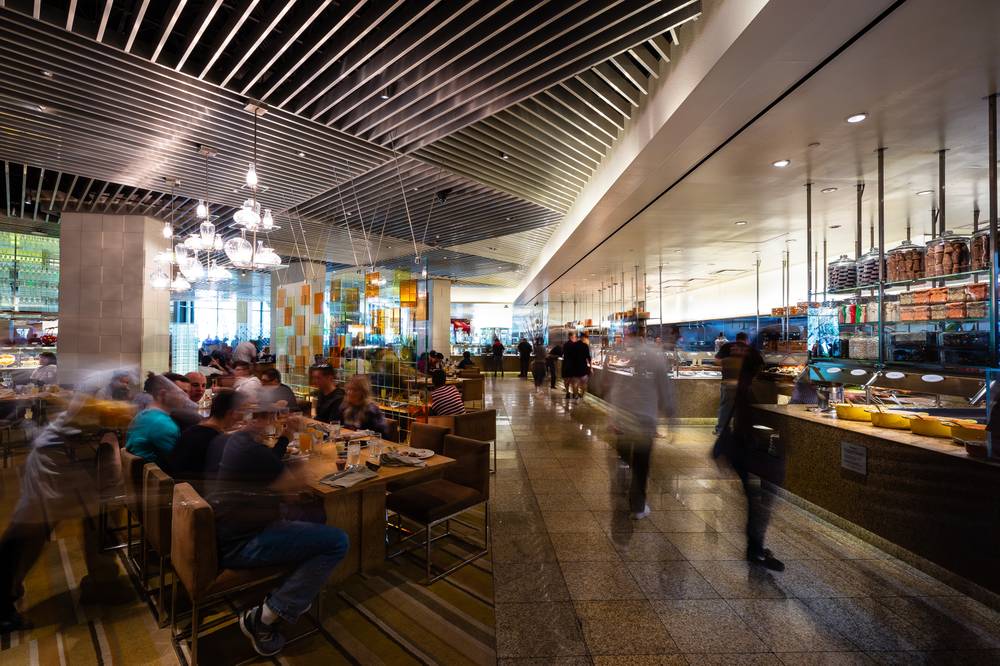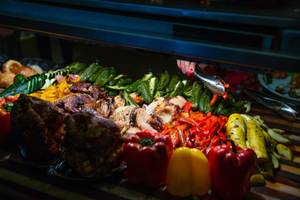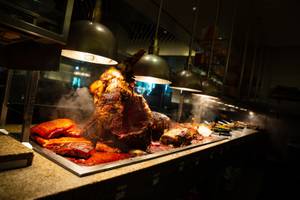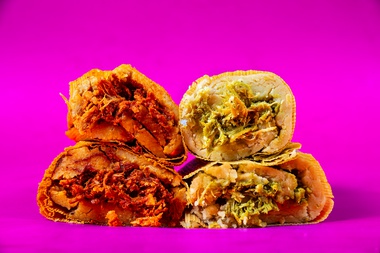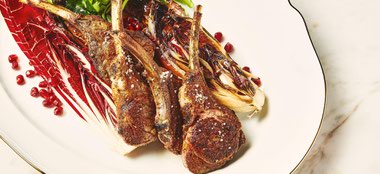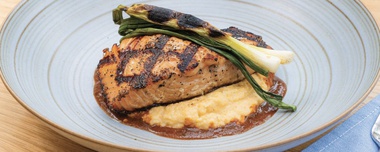Fresh-sliced wagyu beef and applewood smoked bacon. Cinnamon churros and chocolate champurrado. Truffled egg cocotte and bananas foster donuts. Watermelon juice and yogurt parfaits. Tempura shrimp udon and tonkotsu ramen. Maple-glazed sweet potato tots and egg sardou with lobster bearnaise. Smoked salmon, mussels, creole shrimp ’n’ grits, tuna poke and, of course, crab legs galore. Our list seems ridiculously long—without even including dessert—yet it barely scratches the surfaces at this gourmet garden of delights.
Vegas buffets
Serving up to 4,000 people a day, the Bacchanal Buffet is the highest-grossing-revenue restaurant at Caesars Palace. It has achieved that distinction by being the best at two things: quality and quantity. More than a culinary triumph, Bacchanal is also a monumental achievement of engineering, planning and teamwork. Here’s how it works.
Farm to many tables
“Even when you’re cooking for thousands of people, I still want to do everything from scratch,” Executive Chef Leticia Nunez says. “Everything has to come in fresh, and we make it all here.”
Nunez hails from Oaxaca, Mexico, where she grew up eating her grandmother’s mole and barbacoa. She came up as a chef in Northern California’s Napa Valley, where she cemented her preference for farm-fresh ingredients and scratch-made dishes. “We had a huge garden, and we just went out there and picked all of our herbs and tomatoes,” Nunez says of her experience working at the restaurant at Robert Mondavi Winery under Chef Annie Roberts. (Over the years, she has also worked with other such greats as Thomas Keller, Alice Waters and Rick Bayless.) “I just love the smell of basil growing or fresh tomatoes. That’s where a lot of my influences came early on.”
Impossible as transferring craft concepts to a buffet might seem, Nunez had a head start. Before taking the job at Bacchanal, she gained large-scale experience as the executive banquet chef at Rio. “I love the idea of doing this big, big, big baby. It had my heart from the beginning,” Nunez says about the job opportunity. “So it was easy is it to say yes.”
Bacchanal is divided into nine show kitchens: Latin, Italian, Chinese, Japanese, American, seafood, pizza, deli and dessert. As diners go through the line, they see chefs assigned to each, tossing pizzas, scooping gelato and carefully constructing dishes. But these are just the finishing touches. The buffet kitchens aren’t large enough for the entire job, so Bacchanal makes use of a large production facility roughly a mile away, in the resort’s Octavius Tower.
In order to make everything from scratch, the first cooks arrive at the Octavius Kitchen at 3 a.m. They prepare sauces and smoke meats for hours. They send soup to Bacchanal in 140 gallon batches, which Nunez says go fast. And six runners deliver ingredients to the buffet via motorized carts daily from 5 a.m. to 10 p.m. “We have to move fast,” Nunez says.
For her part, Nunez shows up on property between 3 and 5 a.m., depending on the day’s workload. She works until 7 p.m., typically taking her sustenance from three or four taste line taste-tests “to make sure that we’re staying on point with flavors.”
Team buffet
One of a buffet’s toughest obstacles is timing. Since guests aren’t ordering from a menu, there must be an even flow of food coming out at all times. Too little, and diners feel slighted. Too much, and food sits out too long. After about 10-15 minutes, dishes are discarded.
Bacchanal has determined that the optimum batch size is 12 servings, often plated individually for the most elegant presentation. Thus, a dish like risotto is always being made fresh, in batches small enough to serve a single family
Even as chefs oversee daily tasks, they have an eye toward future menus, which change seasonally. Nunez and her team constantly search for fresh ideas, keeping an eye on the most desired dishes from around the globe to please an international tourist base. And the staff fastidiously monitors Yelp reviews to fix any problems as soon as they arise.
“We have to stay very much on top of every culinary trend … we have to keep our tools sharp,” Nunez says. “We can’t just come in and say that we’re on top the world. We have to stay motivated.”
Caesars Chef de Cuisine Richard Leggett credits the staff’s dedication and attention to detail for Bacchanal’s success. Still, he concedes that it can be challenging to get the buffet’s more than 300 employees on the same page at the same time. And it’s not just cooks and runners. The buffet also requires an engineering department to maintain the equipment, and a stewarding department to clean. There are hosts up the front and bussers removing empty plates from tables.
“It’s a lot of moving parts,” Leggett says. “The buffet needs a set number of people in order for it to operate.” Bacchanal keeps a steady flow of employees trained and ready in case regulars call in sick.
Like any sports team, different players have different skills and abilities. “You can’t put everybody on pizza, because it’s an acquired skill to be able to toss the dough, pour the dough and make a good pizza.” Similarly in the Octavius Kitchen, employees must have specific training to follow Nunez’s recipes. “We want certain people in certain positions, our aces in places, so to speak.
“We make it work by giving them something to believe in and giving them the support they need.”
